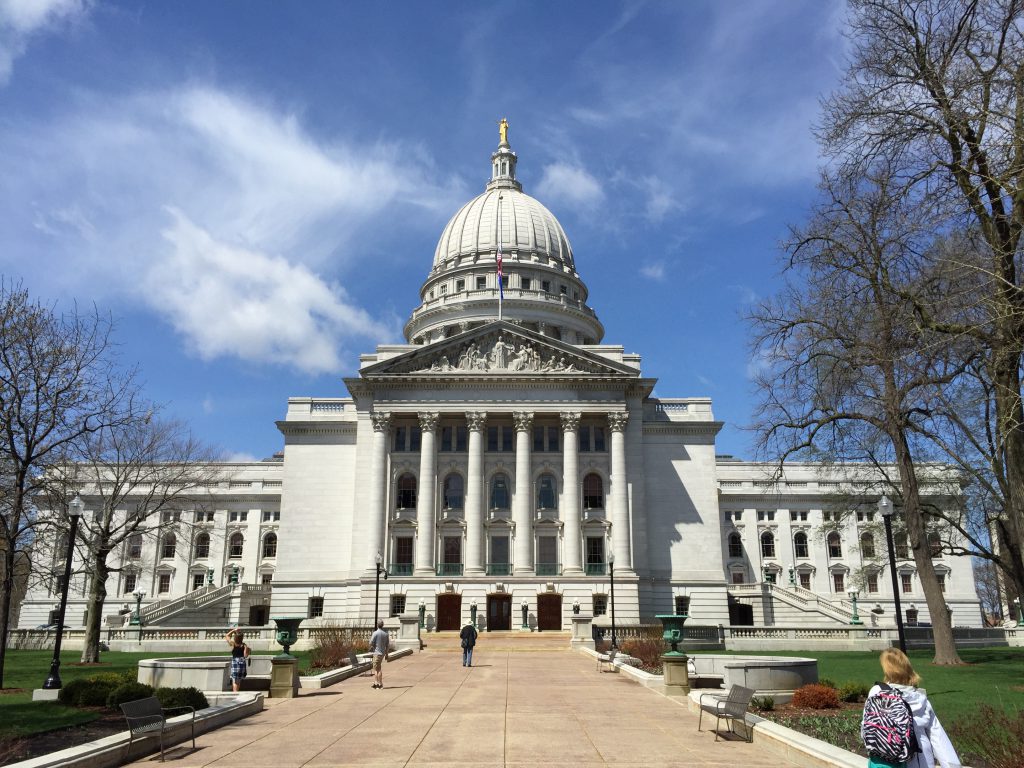State’s ‘Hidden Deficit’ Lowest in 30 Years
Great news except… it’s still higher than in 49 other states.
The wonky nonpartisan Wisconsin Policy Forum has just come out with very interesting analysis of something I’ve never heard of: the state’s “hidden deficit.”
It’s a bit similar to the term “structural deficit,” which used to get tossed around in the state Capitol and in occasional thumb-sucker stories by reporters with a high tolerance for dreary budget details. It was also something that got discussed by the old Wisconsin Taxpayers Alliance, whose director Todd Berry used to complain was a meaningless term that got defined in too many different ways. A better way to measure the long-term condition of state finances, he argued, was to do it just as the financial statements of publicly traded companies do, using Generally Accepted Accounting Principles (GAAP) to measure their budget.
Berry is now retired, after his WisTax group merged with Milwaukee’s Public Policy Forum to become the Wisconsin Policy Forum (WPF), and its research director is Jason Stein, a former reporter for the Milwaukee Journal Sentinel who used to interview Berry about such financial ephemera. And voila’, we now have an analysis of the “hidden budget deficit”, which uses a GAAP analysis to tell us the Wisconsin’s budget.
That 2019 figure was a $480.1 million improvement in 2019 – a 38.3 percent decrease over the previous year’s ending negative balance of $1.25 billion, the report noted.
That’s very good news. And yet the reality is that Wisconsin is in much worse shape than nearly any state. Only two other states have a negative GAAP balance, Stein found: Kentucky has a negative balance of $59.1 million, lower than Wisconsin’s and only Illinois, beset with massive pensions problems, has a higher negative balance — an astounding $7.76 billion.
Wisconsin, the report makes clear, has always run negative GAAP balances, going back 30 years, since the state first began calculating this figure. It stood at $3.1 billion in 2003, the last year of Republican Gov. Scott McCallum’s budget and was a key issue Doyle raised, assailing him for having such a high long-term deficit (my recollection is he called it a “structural deficit”). Yet it stood even higher at $3.4 billion in 2011, Democratic Gov. Jim Doyle’s last year, which Republican Gov. Scott Walker repeatedly bashed Doyle for during Walker’s winning 2010 campaign. And Walker did help to greatly lower that figure, to the lowest amount in 30 years.
Which brings us to the limitations of the data. Doyle, after all, was governor during the greatest downturn in American history since the Great Depression, which meant state revenue collected thought the sales and income taxes plummeted, which made it far harder to balance the budget. Whereas Walker saw the national economy get better every year he was in office, increasing the sale and income taxes collected.
As for 1990, the previous low in the state’s GAAP deficit, that was back when Gov. Tommy Thompson was basking in an income tax that was not indexed for inflation, generating hefty automatic increases in the tax haul each year, enabling him to increase state spending at a rate exceeding that of any governor save Democrat Patrick Lucey over the last half century.
The WPF has done reports noting that both Milwaukee County and the City of Milwaukee face massive financial challenges for which a key driver is the decline in state shared revenue.
Finally, there is the issue of the state’s long-term debt. Its transportations fund debt, in particular, soared during Walker’s time as governor, something this analysis doesn’t examine.
All of which is not to undercut the WPF report, which is a beam of light on just one issue that helps us better understand state government and with a term, “hidden deficit”, that is on point and easy to grasp. It also reveals some fiscal tricks the state has used for years to makes budgets that aren’t balanced look like they are, which merit attention.
As for the report’s bottom line finding, I would never have imagined that Wisconsin would rank worse than 49 states in its hidden deficit. In the old days, back when newspapers marshaled a large cadre of Capitol reporters, that would have been a major headline. Nowadays, not one news headline.
If you think stories like this are important, become a member of Urban Milwaukee and help support real, independent journalism. Plus you get some cool added benefits.
Murphy's Law
-
National Media Discovers Mayor Johnson
 Jul 16th, 2024 by Bruce Murphy
Jul 16th, 2024 by Bruce Murphy
-
Milwaukee Arts Groups in Big Trouble
 Jul 10th, 2024 by Bruce Murphy
Jul 10th, 2024 by Bruce Murphy
-
The Plague of Rising Health Care Costs
 Jul 8th, 2024 by Bruce Murphy
Jul 8th, 2024 by Bruce Murphy






















“The WPF has done reports noting that both Milwaukee County and the City of Milwaukee face massive financial challenges for which a key driver is the decline in state shared revenue”.
SO does City of Racine – my beloved Hometown.
Municipalities still have the option of Bankruptcy. I challenge the WI Republicans to lift the artificial property tax limits currently imposed by law – so that the free market can take it’s course – and Communities can either prosper – or collapse – under Bankruptcy statutes. Birth – Death – Resurrection – IS the Circle of Life.
Republican US President Donald Trump has shown that Bankruptcy is a viable option which can turn around a Business – and Government IS a Corporate Business.
Thanks for the great reporting – Mr. Murphy!